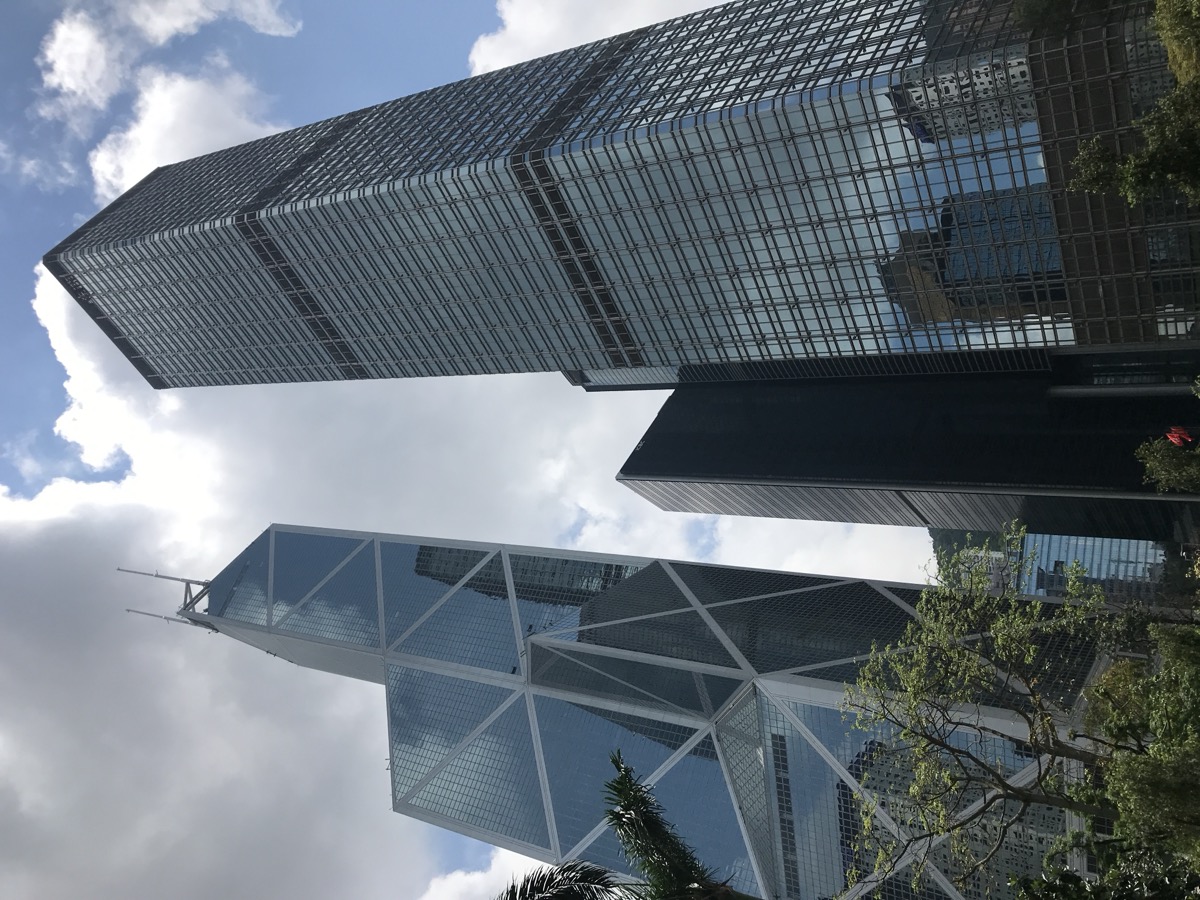It is also a lively district with bars, restaurants, and luxury shopping centers, notably The Landmark and IFC Mall. Streets like Lan Kwai Fong and Soho are popular for nightlife.
The district is well served by MTR Central Station, ferries to Kowloon, and historic trams crossing the island. It is also the departure point of the Peak Tram, which leads to Victoria Peak, offering panoramic views of the city.
The Nerve Center of Hong Kong
Central (中環, Chung Wan) is located on the northern coast of Hong Kong Island. It is the historic district of the British colony founded in 1841, now the main business district, housing banks, regional headquarters of multinational companies, administrative institutions, and luxury shops.
Central is simultaneously vertical, historic, and densely strategic.
Visible Colonial Heritage
Central preserves several iconic buildings from the British era:
- Court of Final Appeal (former Supreme Court building).
- St. John’s Cathedral, the oldest Anglican church in the Far East.
- Former Legislative Council Building, neoclassical style.
- Government House, former governor’s residence.
These structures contrast with the surrounding modern skyscrapers, embodying Hong Kong’s architectural duality.
Vertical Capital
Central is also an architectural laboratory, with landmark towers such as:
- Bank of China Tower (I. M. Pei), with sharp geometric forms.
- Two IFC (International Finance Centre), 415 meters tall.
- HSBC Main Building, a high-tech structure designed by Norman Foster.
This vertical skyline symbolizes the city’s financial power and urban ambition.
Urban Mobility and Escalators
Built on a hillside, the district is crossed by the famous Mid-Levels Escalator:
- A system of covered escalators and walkways over 800 meters long.
- Connecting lower areas (Central, Soho) with residential neighborhoods above (Mid-Levels).
It is an unusual mode of transport and a living space in itself, lined with restaurants, galleries, and bars.
Cultural Life and Contrasts
Central is more than finance. It hosts:
- PMQ (Police Married Quarters): center for design and contemporary art.
- Tai Kwun, former prison complex now cultural and museum space.
- Lan Kwai Fong and Soho, nightlife hotspots, cosmopolitan and lively.
- Art galleries, independent cafes, architecture bookstores…
Central is also a zone of social contrasts: expats, office workers, domestic helpers, tourists, and residents mingle daily.
A Symbolic District
Central is often seen as the embodiment of the “one country, two systems” model:
- It houses the Hong Kong Stock Exchange, major banks, but also political gatherings (Occupy Central, 2014).
- It is a space both highly surveilled and highly free, symbolizing the city’s contemporary tensions.
Conclusion
Central is the beating heart of Hong Kong: a district where colonial past meets contemporary architecture, where art emerges between office towers, and where the city is conceived, lived, and contested. It is not just a geographic center, but a symbol of Hong Kong’s urban, economic, and political destiny.
